Amazon Redshift is a powerful and fully-managed data warehouse service provided by Amazon Web Services (AWS), designed to efficiently analyze large datasets with high performance and scalability.
The ballerinax/aws.redshift connector facilitates seamless integration with Amazon Redshift, offering Ballerina users a convenient and expressive way to connect, query, and interact with Redshift clusters, utilizing the AWS Redshift JDBC driver available through ballerinax/aws.redshift.driver.
To effectively utilize the Ballerina AWS Redshift connector, you must have an Amazon Redshift cluster. Follow these steps to create an AWS Redshift cluster.
- Begin by logging into the AWS Management Console.
-
In the AWS Console, navigate to the Amazon Redshift service. Click on the "Create cluster" button to initiate the process of creating a new Amazon Redshift cluster.
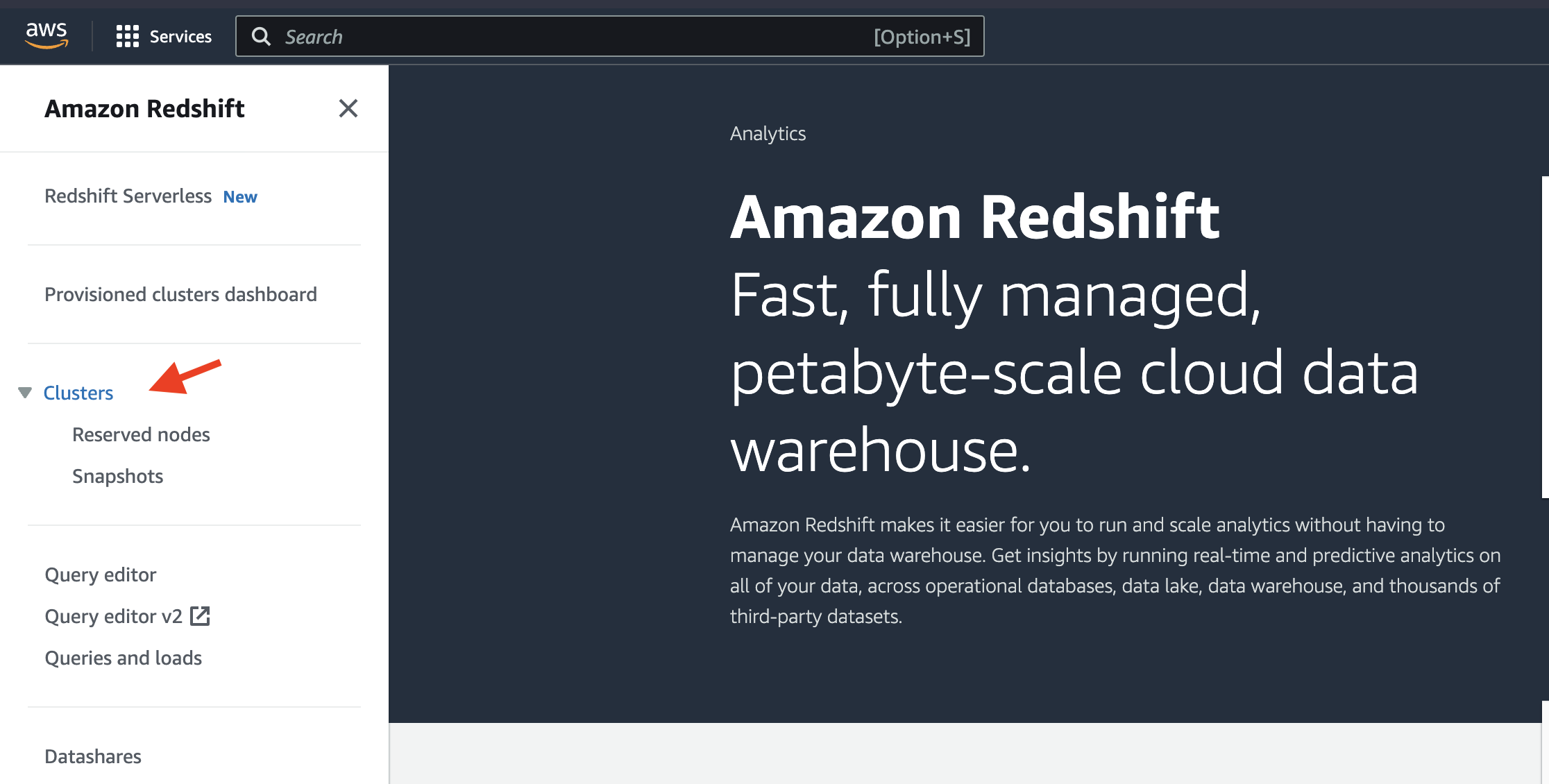
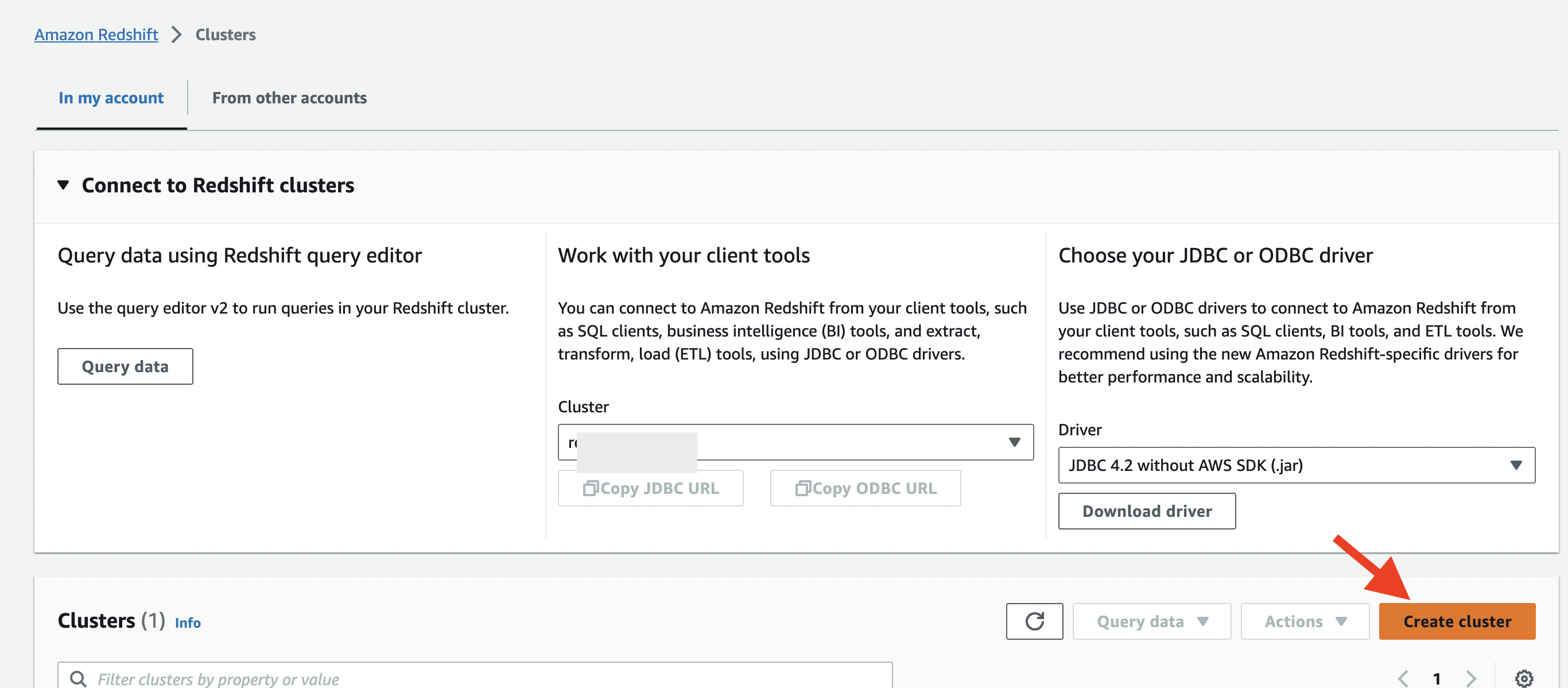
-
Follow the on-screen instructions to configure your Redshift cluster settings, including cluster identifier, database name, credentials, and other relevant parameters.
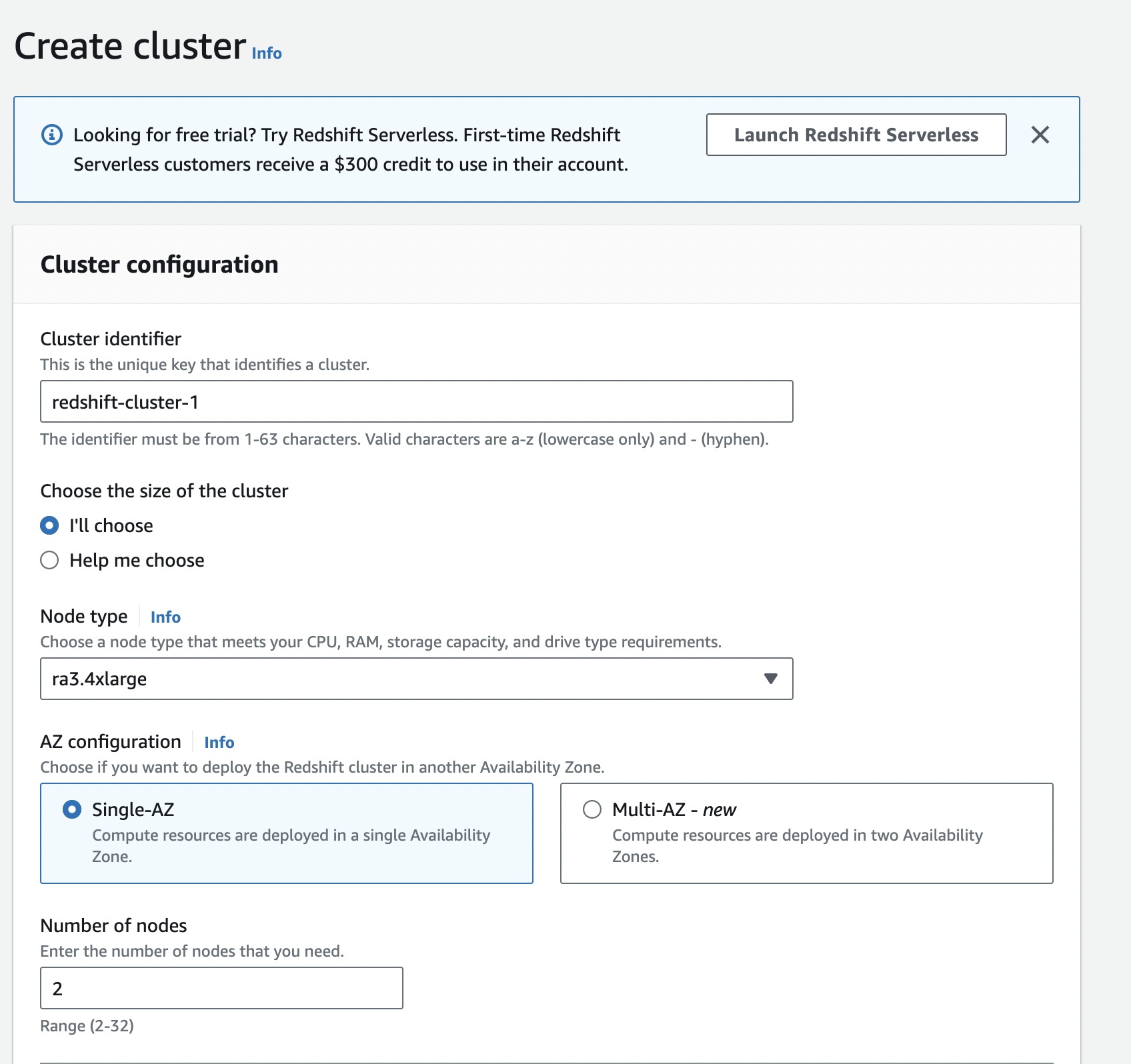
-
Configure security groups to control inbound and outbound traffic to your Redshift cluster. Ensure that your Ballerina application will have the necessary permissions to access the cluster.
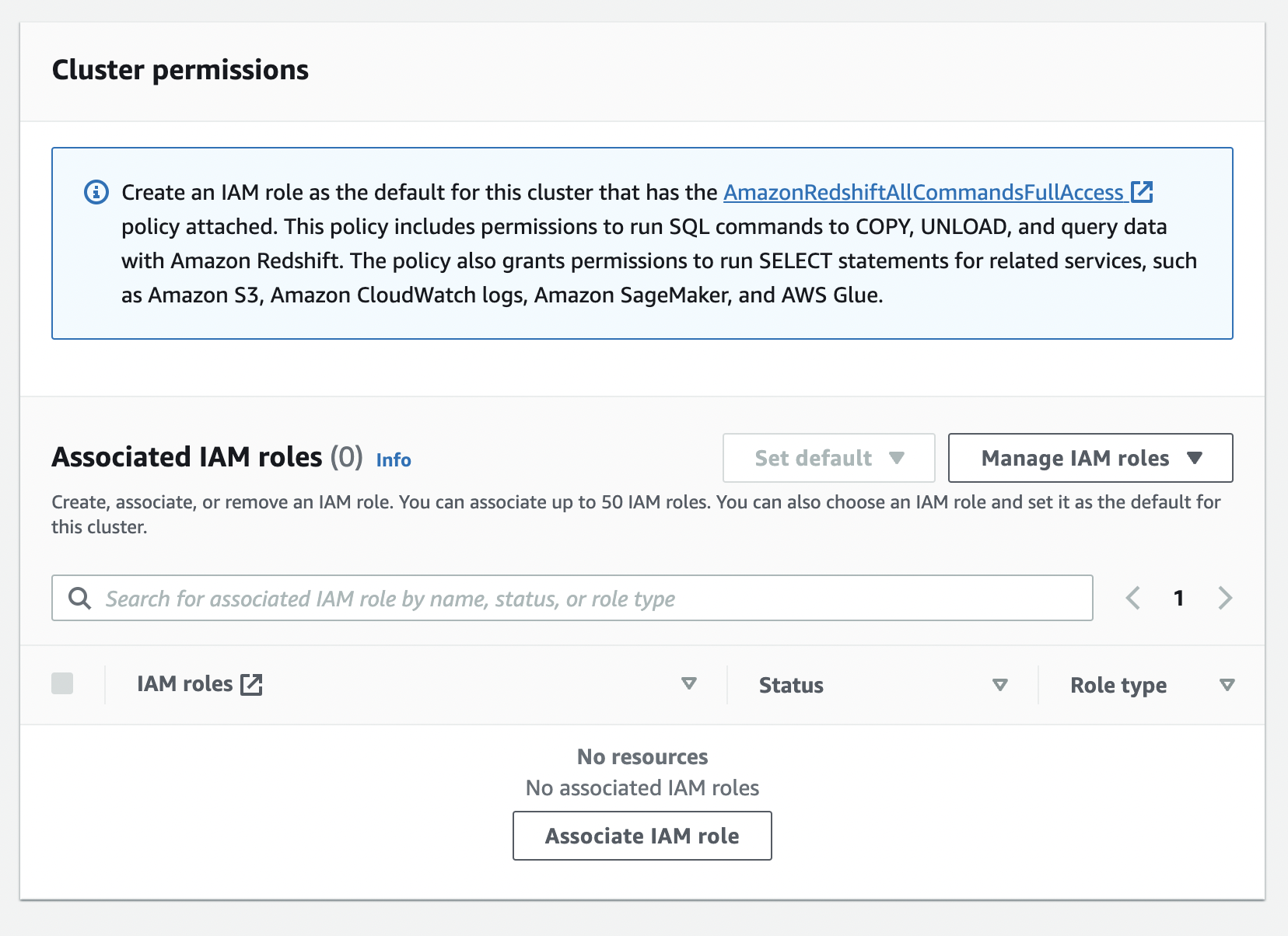
-
Record the username and password you set during the cluster configuration. These credentials will be used to authenticate your Ballerina application with the Redshift cluster.

-
Finally, review your configuration settings, and once satisfied, click "Create cluster" to launch your Amazon Redshift cluster.
-
It may take some time for your Redshift cluster to be available. Monitor the cluster status in the AWS Console until it shows as "Available".

-
After the cluster is successfully created, copy the JDBC URL. You can find this information in the cluster details or configuration section of the AWS Console.
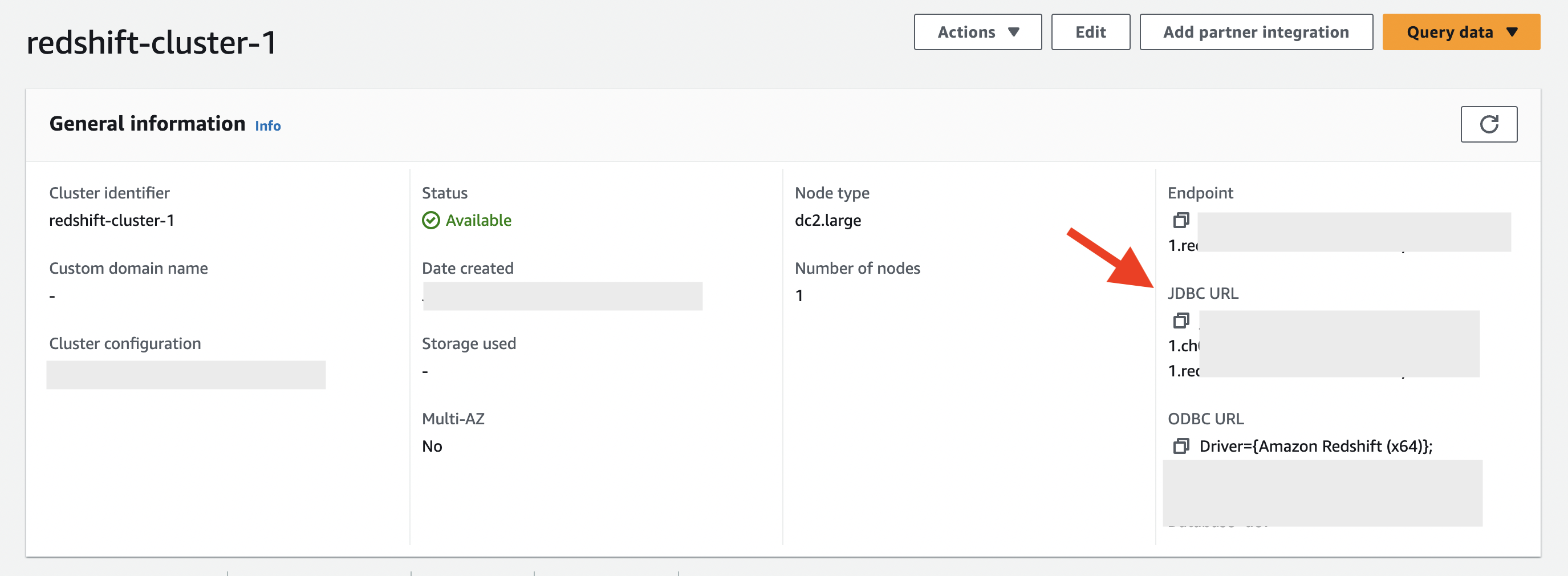
To use the aws.redshift connector in your Ballerina application, modify the .bal file as follows:
Import the ballerinax/aws.redshift package and the ballerinax/aws.redshift.driver into your Ballerina project.
import ballerinax/aws.redshift; // Get the AWS Redshift connector
import ballerinax/aws.redshift.driver as _; // Get the AWS Redshift driverCreate a redshift:Client with the values obtained in the previous steps.
// Connection Configurations
configurable string jdbcUrl = ?;
configurable string user = ?;
configurable string password = ?;
// Initialize the Redshift client
redshift:Client dbClient = check new (jdbcUrl, user, password);Now, utilize the available connector operations.
// Create the result record to match the columns of the table being queried.
type User record {|
string name;
string email;
string state;
|};
sql:ParameterizedQuery sqlQuery = `SELECT * FROM Users limit 10`;
stream<User, error?> resultStream = dbClient->query(sqlQuery);
check from User user in resultStream
do {
io:println("Full details of users: ", user);
};sql:ParameterizedQuery sqlQuery = `INSERT INTO your_table_name (firstname, lastname, state, email, username)
VALUES ('Cody', 'Moss', 'ON', 'dolor.nonummy@ipsumdolorsit.ca', 'WWZ18EOX');`;
_ = check dbClient->execute(sqlQuery);The aws.redshift connector provides practical examples illustrating usage in various scenarios. Explore these examples.
-
Read data from the database - Connects to AWS Redshift using the Redshift connector and performs a simple SQL query to select all records from a specified table with a limit of 10.
-
Insert data in to the database - Connects to AWS Redshift using the Redshift connector and performs an INSERT operation into a specified table
-
Music store - This example illustrates the process of creating an HTTP RESTful API with Ballerina to perform basic CRUD operations on a database, specifically AWS Redshift, involving setup, configuration, and running examples.
The Issues and Projects tabs are disabled for this repository as this is part of the Ballerina library. To report bugs, request new features, start new discussions, view project boards, etc., visit the Ballerina library parent repository.
This repository only contains the source code for the package.
-
Download and install Java SE Development Kit (JDK) version 17. You can download it from either of the following sources:
Note: After installation, remember to set the
JAVA_HOMEenvironment variable to the directory where JDK was installed. -
Download and install Ballerina Swan Lake.
-
Download and install Docker.
Note: Ensure that the Docker daemon is running before executing any tests.
Execute the commands below to build from the source.
-
To build the package:
./gradlew clean build
-
To run the tests:
./gradlew clean test -
To build the without the tests:
./gradlew clean build -x test -
To debug package with a remote debugger:
./gradlew clean build -Pdebug=<port>
-
To debug with the Ballerina language:
./gradlew clean build -PbalJavaDebug=<port>
-
Publish the generated artifacts to the local Ballerina Central repository:
./gradlew clean build -PpublishToLocalCentral=true
-
Publish the generated artifacts to the Ballerina Central repository:
./gradlew clean build -PpublishToCentral=true
As an open-source project, Ballerina welcomes contributions from the community.
For more information, go to the contribution guidelines.
All the contributors are encouraged to read the Ballerina Code of Conduct.
- For more information go to the
aws.redshiftpackage. - For example demonstrations of the usage, go to Ballerina By Examples.
- Chat live with us via our Discord server.
- Post all technical questions on Stack Overflow with the #ballerina tag.

